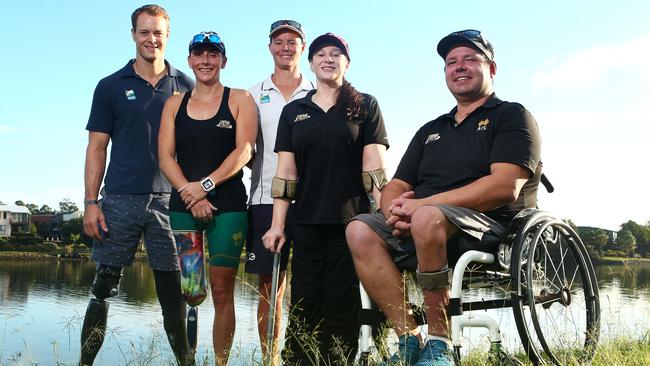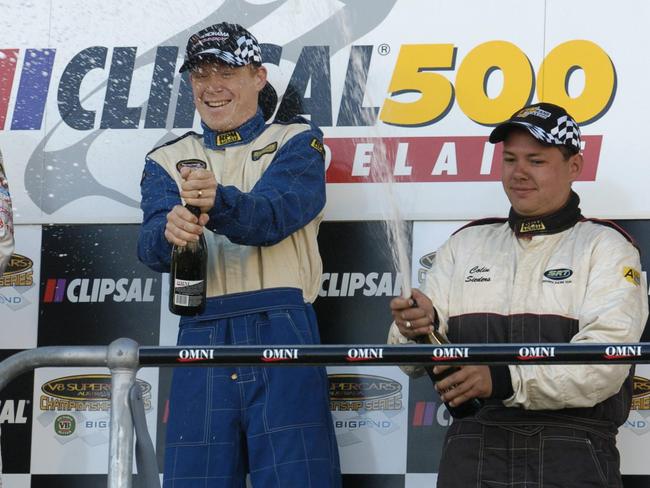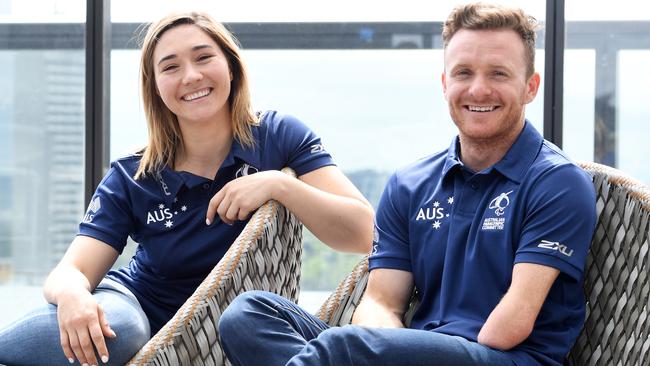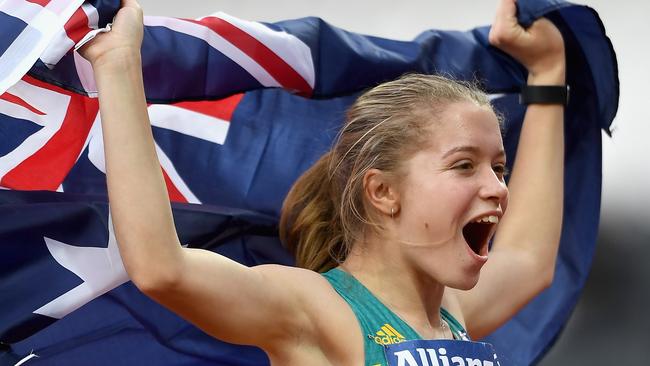After two crashes and a motorsport career, Colin Sieders is paddling for gold in the Rio Paralympic Games
COLIN Sieders has his world record even before he touches down in Rio — and it has nothing to do with how fast he can paddle.

COLIN Sieders has his world record even before he touches down in Rio.
“Yeah, most blood ever used at an accident scene,” the Paralympics kayaker grins.
“I’m not sure if I’ve still got it but the paramedics told me at the time it was a world record.
“It’s a bit gruesome but the doctor said after they cut me out of the car and started treating me, he was standing in a puddle of blood and saline — it was coming out just as fast as they were pumping it in.”
Sieders, 34, will be part of Australia’s six-person Para-canoe team when the sport makes its Paralympics debut next month.
For the NSW father of three, his Paralympic odyssey to the start line of the K1 200m event caps a dramatic 20 years that has included two separate road accidents, a decorated motorsport career and, now, the chance to paddle for gold.
“I’d love to get a medal, that would be a dream,” he says.
“I was ranked fifth in the world last year but I’ve had a few injuries this year so I’m down to No. 13, so I really want to get back in that top-five.”
Sieders’ roundabout journey to the Paralympics began in 1997, when he was 15. A back seat passenger with a mate, Sieders’ trip to soccer training 19 years ago went horribly wrong when the car they were travelling in hit black ice on a Blue Mountains road and crashed into a telegraph pole.

Sieders’ friend’s mother was killed instantly and Sieders, sitting directly behind the drivers seat, was trapped inside the wreck for more than two hours.
Only the good fortune of emergency responders carrying an over-supply of blood kept the teenager alive — and his recovery from that world record rewrote the standards for on-board blood supplies.
Sieders, see, has a habit of doing the unexpected.
Having survived the ordeal, dire early predictions suggested he was destined for a lifelong coma.
Within months, against all probability, signs of brain activity sparked into consciousness. Eventually, movement and communication returned.
He spent 88 days in intensive care and had 30 surgeries to repair the internal damage and extensive fractures to his legs and pelvis.
Yet, 51 weeks after the accident Sieders was released from hospital in a wheelchair — with the advice to expect never to walk again.
Then, after three years of intensive rehabilitation, he was up on his feet. Limping, sure. But upright.
“I don’t think I ever had the thought that I wouldn’t be able to do anything,” Sieders says.
“Pretty much as soon as I woke up, it was a case of ‘what am I going to do next?’.”
So exactly what does a young bloke, newly disabled from a car crash, do next?
“That’s when I started racing Aussie Racing Cars,” he says.
After several seasons in the popular category, Sieders rose to V8 Supercars’ developmental series, driving with a hand clutch having lost 70 per cent strength in his left leg.
Then, in 2011, life took another unexpected left-hander when he was involved in another road crash — this time, a head-on with a delivery truck that strayed into the wrong lane around a bend.

The impact amplified Sieders’ previous injuries, causing further damage to his hip and leading to another painful six-month recovery.
The accident prompted Sieders to switch from motorsport to Para-canoe in 2012, to rebuild his fitness and through a desire for a fresh challenge.
Sieders found quick success, and when the sport was ratified as a Paralympic sport in 2013 his roadmap to Rio was marked.
For the past two months Sieders has been training with fellow squad members on the Gold Coast, while wife Erin and children Rosie, Violet and Phoenix remain at home in western Sydney.
“It makes it hard because pretty much in the last year I haven’t worked at all, so we’ve been living off our savings,” he says.
“And Erin, through it all, she’s a trooper. She’s been raising three kids including our one-year-old twins on her own.”
Sieders is aiming to raise $50,000 through the Australian Sports Foundation to help cover the escalating costs of his training and Rio preparation.
Donations can be made at: asf.org.au/athletes/colin-sieders
Fellow Paralympians Ahmed Kelly (swimming), Ellie Cole (swimming), Richard Colman (athletics), Emma Booth (equestrian) and Shawn Russell (wheelchair basketball) are headlining another Paralympics crowd-funding campaign through Optus.
People can donate $5 by texting “#high5” to 1999 8787.
Originally published as After two crashes and a motorsport career, Colin Sieders is paddling for gold in the Rio Paralympic Games



